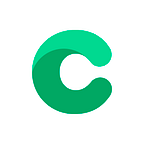The Use of Learning Science Research as an Indicator of Edtech Quality
With Educational Technology’s (Edtech’s) unparalleled growth, universities, educational institutions, and even Edtech startups all over the world need to keep up with the changing educational market. It’s no longer just a matter of creating learning programs and massive open online courses (MOOCs) that can respond to training and development needs. Today, learners are also focusing on attaining lifelong learning skills or aiming to bridge an existing skills gap that could help them achieve their learning goals.
With all the unlimited learning resources learners can access online, how will you know whether the Edtech program you’re tapping into is of a high-quality caliber that can help you achieve your company’s training and development goals? What exactly can you use as an indicator of Edtech quality?
The Importance of Learning Science Research
Learning science research helps assess how people learn best based on how preferred learning styles, environmental conditions, and human variability can potentially influence learning outcomes. It also has the potential to tap into technology and create even more impactful learning opportunities.
Learning science research has opened doors for upskilling and reskilling, especially for attaining lifelong learning skills and bridging the skills gap. The use of learning science research with the right assessments and evaluations has helped Edtech tools clearly identify Edtech’s potential impact on learning. It can also help evaluate the actual technology-integrated learning program’s or product’s impact on learning. Another advantage of learning sciences research is its ability to ensure that the products integrated with it stay dynamic and engaged in the field.
Through learning science research, using EdTech products, such as MOOCs, bootcamps, and OPMs that are designed from a research-based goal, can now help you track progress towards your specific goals and their impact on learning. So, if your main objective is to bridge the skills gap in your company, you can easily assess if you’ve achieved that goal after implementing your training and development programs.
3 Essential Scientific Theories According to Research
At Capabilia, our training and development models and teaching and learning methods are supported by three main scientific theories. Through these proven theories, lifelong learners can easily attain the skills to achieve their learning goals. This can also help trainees who are reskilling and upskilling to bridge the existing skills gap.
Deep Learning
In the context of deep learning, lifelong learners can examine new facts and ideas more critically. This allows them to connect these new concepts to existing cognitive structures and create multiple links between their ideas. When lifelong learners engage in deeper learning, they can think, communicate, and collaborate more critically and effectively across different topics.
Once engaged in deeper learning, it’s easier for trainees to self-direct their own learning courses and adopt lifelong learning mindsets.
Skills-based Learning
With skills-based learning, lifelong learners become more hands-on when learning new concepts. In this context, it’s no longer just about gaining knowledge theoretically. Now, there’s also planning, implementing, and analyzing the skills they have gained through knowledge-based learning methods.
Using skills-based learning for Edtech helps develop independent learners and prepares them for real-life challenges in the future. Skills-based learning is also applicable for trainees and lifelong learners who want to change career paths and explore upskilling and reskilling.
Stanislas Dehaene’s Four Pillars of Learning in Relation to E-Learning
In his book, How We Learn: Why Brains Learn Better Than Any Machine . . . For Now, Stanislas Dehaene emphasizes that learning is the process of creating an internal model of the outside world inside our brains. He further discusses four critical elements of learning — attention, active engagement, error feedback, and consolidation.
Using the concepts in this theory demonstrates how the human brain is still a more efficient learner compared to machines, especially in reasoning and extracting abstract principles from empirical data and observations. These principles show that learners and trainees alike can easily achieve their goals and outcomes, as long as they set their minds to it.
Using Learning Science Research to Achieve Lifelong Learning
There is no one indicator that can help you identify which specifically points to effectivity and quality. However, since the teaching and learning process is an intricate web that involves numerous stakeholders and factors, this also means that a mixture of results can ultimately show how effective an educational program is. This includes completion rates as well as satisfaction and grades, and of course later employability. Find out how research can help drive growth in your company or university.
